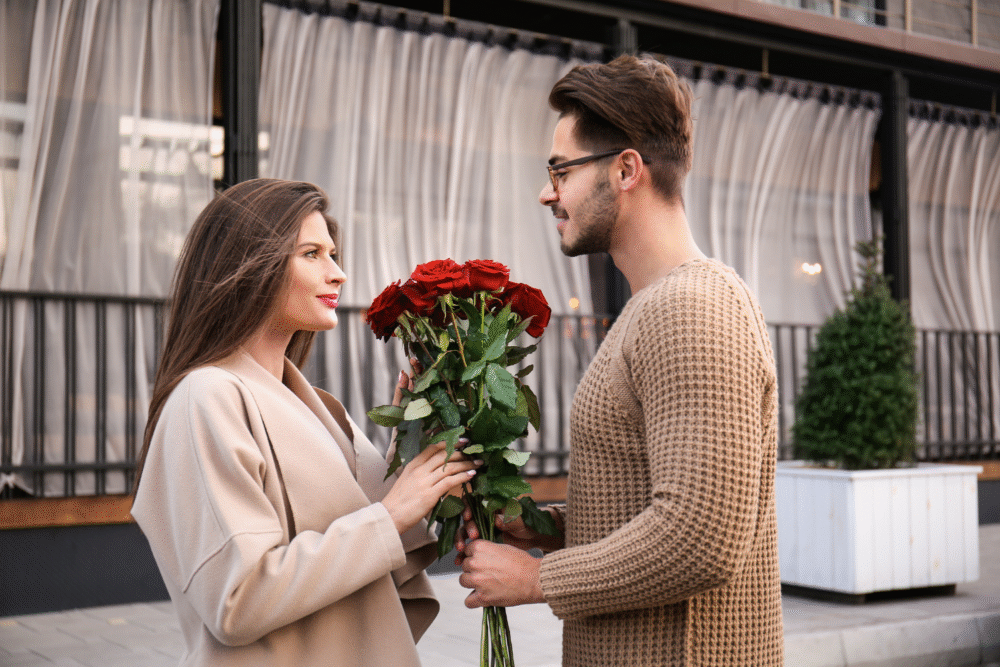Romance was once braver, slower, and handwritten.

Dating apps may have streamlined introductions, but they stripped away the messy courage that once defined romance. People risked embarrassment face-to-face, tested creativity through gestures, and built anticipation through patience. Those rituals worked because they felt deliberate and sincere.
Here are ten old-school ways people asked each other out—and why they often led to stronger connections than the frictionless swipes of today.
1. Passing notes turned curiosity into suspense.

A folded note slipped across a desk carried weight that no DM can match. Each word was handwritten, every doodle intentional, and the fear of interception made the moment electric.
It worked because it felt personal. The message was a secret shared in shaky script, not a recycled line. When the answer came back—yes or no—it carried gravity, because effort had been risked in the process.
2. Calling a landline required nerve.

Picking up the phone meant dialing not just your crush but often their parents first. The awkward buffer was terrifying, but it also showed seriousness.
It worked because it demanded effort. A phone call couldn’t be faked or hidden. The act itself became a declaration of interest, making the invitation more genuine than a casual text could ever feel.
3. Asking in person was bold simplicity.

Waiting at a locker or outside school was nerve-wracking, but it forced authenticity. There was no filter, no emoji—just tone, expression, and the raw possibility of rejection.
It worked because it showed courage. The bravery was as appealing as the invitation itself. A yes felt bigger, and even a no carried respect for having tried directly.
4. Writing letters made feelings tangible.

Some poured their hopes into full pages, folded and scented with effort. Letters weren’t fleeting—they lingered, reread during quiet moments and saved in boxes for years.
It worked because permanence mattered. Ink felt weightier than keystrokes, and the time it took to write amplified sincerity. The message was proof of thought, not impulse.
5. Sharing mix tapes turned music into courtship.

Compiling songs on a cassette was laborious but meaningful. Each track carried subtext, building a narrative that words alone couldn’t.
It worked because time equaled intention. Hours of rewinding and recording transformed the ask into an experience. The recipient didn’t just hear music—they heard attention, creativity, and vulnerability layered in sound.
6. Using friends as messengers softened the risk.

Recruiting a friend to casually float the question wasn’t cowardly; it was tactical. They tested the waters, reducing the sting of a possible no.
It worked because it lowered stakes while keeping interest clear. By the time the real ask came, it felt less like a gamble and more like the natural next step.
7. Inviting to school dances gave structure.

A dance wasn’t just a date—it was an event with music, lights, and weeks of anticipation. Asking carried higher stakes, but also clearer meaning.
It worked because the context made commitment easier. A yes meant saying yes to an experience, not just a vague outing. That framework turned small courage into lasting memory.
8. Bringing flowers made feelings visible.

Showing up with a single rose or a small bouquet spoke more directly than words. The gesture itself announced intention before the invitation was even voiced.
It worked because it left no room for confusion. Flowers made romance undeniable, transforming a simple question into a bold declaration.
9. Asking parents was a sign of respect.

Sometimes, tradition demanded asking through parents first. It added a layer of formality and showed the invitation wasn’t casual.
It worked because it signaled seriousness. The willingness to involve family made the gesture trustworthy and respectful, qualities that deepened connection rather than cheapened it.
10. Simply asking outright cut through the noise.

The plain “Do you want to go out?” required nothing but honesty. It carried risk, but also clarity. There were no games or filters—just a direct question.
It worked because simplicity made the moment unforgettable. Interest was laid bare, and that openness created connection, whether the answer was yes or no.
